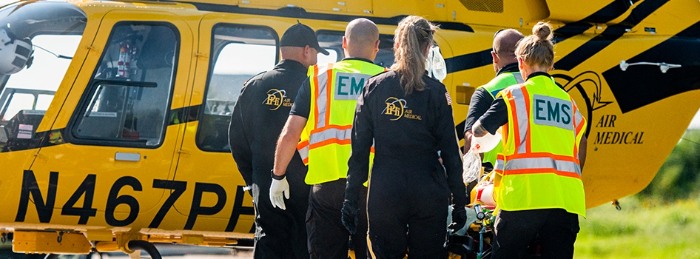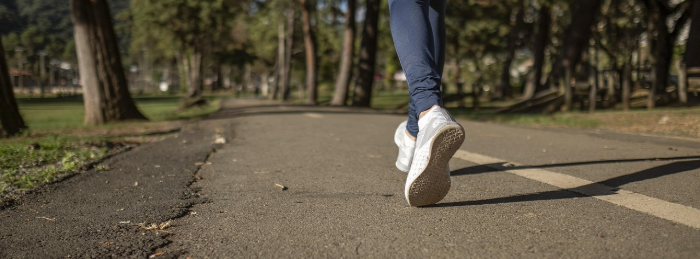Most Common Summer Injuries That Require Air Medical Transport
Summer is a season of sunshine, adventure, and outdoor fun. Whether you’re hitting the trails, enjoying water sports, or simply spending more time outside, the warmer months offer countless opportunities to make memories. However, increased activity also brings a higher risk of injuries and medical emergencies, many of which may require rapid air medical transport for the best possible outcome.
Air medical teams, including those from PHI Air Medical, see a predictable rise in specific types of emergencies each summer. Understanding these health emergency risks and knowing how to prepare for them can help you and your family stay safer throughout the season.

Trauma-Related Injuries
Trauma is one of the most common reasons for air medical transport during the summer. These injuries are often severe and time-sensitive, requiring rapid intervention and specialized care.
Key Causes of Summer Trauma:
- Vehicle Collisions: With more people on the road, especially on weekends, comes a higher risk of accidents. The National Highway Traffic Safety Administration (NHTSA) reports a spike in both fatal and nonfatal crashes during summer months.
- Recreational Accidents: Biking, hiking, boating, swimming, and ATV riding are all popular summer activities that can lead to severe injuries, especially when safety precautions are overlooked.
- Falls from Heights: Participating in outdoor adventures in rugged or mountainous terrain increases the risk of falls, which can result in serious trauma.
Why Air Medical Transport Flight?
- Many trauma incidents occur in remote or hard-to-reach locations, where ground ambulances may take too long.
- Air medical teams provide advanced care en route, improving survival rates and outcomes for critically injured patients. Read more about the expertise behind PHI Air Medical including certified flight registered nurses and certified flight paramedics.
Cardiac Events
Hot weather, dehydration, and increased physical activity can put extra strain on the heart. This is especially dangerous for older adults and those with pre-existing heart conditions.
Summer Heart Risks:
- Heat and Dehydration: The American Heart Association warns that extreme heat can increase the risk of heart attacks and other cardiac emergencies as the body works harder to cool itself.
- Physical Exertion: Activities like yard work, hiking, or sports can trigger cardiac events, particularly when combined with high temperatures.
Role of Air Medical Teams:
- In rural or remote areas, air transport via helicopter flight is often the fastest way to get cardiac patients to a hospital equipped for advanced cardiac care.
- Air medical crews are trained to provide lifesaving interventions, such as advanced cardiac life support, during transport.
Stroke Emergencies
Strokes can happen at any time, but the risk of a stroke increases during hot weather. Dehydration and heat can make blood thicker and more prone to clotting, which raises the likelihood of a stroke.
What Increases Stroke Risk in Summer?
- Elevated Temperatures: Studies show that both hot days and warm nights can increase stroke risk, especially in older adults.
- Dehydration: Not drinking enough fluids can worsen the risk and severity of strokes.
Why Speed Matters:
- The American Stroke Association emphasizes the importance of the “golden hour”—the first hour after stroke symptoms appear. Rapid treatment can dramatically improve survival and recovery. Read more about the golden hour in trauma care.
- Air medical transport ensures patients reach specialized stroke centers as quickly as possible.
Heat-Related Illnesses
Heat-related illnesses are among the most common reasons for emergency air medical transport in the summer. These conditions can develop rapidly and become life-threatening without prompt treatment.
Common Heat-Related Emergencies:
- Heat Exhaustion: Symptoms include heavy sweating, weakness, dizziness, nausea, and headache.
- Heat Stroke: A medical emergency characterized by confusion, loss of consciousness, and a body temperature of 104°F (40°C) or higher. Heat stroke can cause organ damage or death if not treated immediately.
- Severe Dehydration: Can lead to confusion, fainting, kidney problems, and other complications.
Air Medical Response:
- Air medical teams are equipped to provide rapid cooling, IV fluids, and advanced monitoring during transport, which can be lifesaving for heat stroke and severe dehydration.
Prevention and Preparedness
While air medical flight teams are ready to respond, prevention is always the best medicine. Here are some practical tips to help you and your loved ones stay safe this summer:
Trauma Prevention:
- Always wear helmets and protective gear during activities like biking, ATV riding, and water sports.
- Follow safety guidelines for outdoor recreation, including swimming in designated areas and using life jackets.
- Avoid risky behaviors, especially in unfamiliar or remote locations.
Cardiac Health Awareness:
- Stay hydrated, especially on hot days.
- Limit strenuous activity during peak heat hours (usually 10 a.m. to 4 p.m.).
- If you have a heart condition, discuss safe activity levels and warning signs to watch for with your doctor.
Stroke Prevention:
- Drink plenty of water throughout the day.
- Learn the FAST acronym for stroke symptoms: Face drooping, Arm weakness, Speech difficulty, Time to call emergency services.
- Seek immediate help if you or someone else shows signs of a stroke.
Heat Illness Avoidance:
- Wear lightweight, light-colored clothing.
- Take frequent breaks in the shade or indoors.
- Know the signs of heat exhaustion and heat stroke, and act quickly if they occur.
PHI Cares air ambulance membership program helps protect families from the high expenses associated with air medical transport. With easy enrollment and household coverage, PHI Cares ensures that, during a medical emergency, your family’s attention can remain focused on recovery rather than financial concerns.


